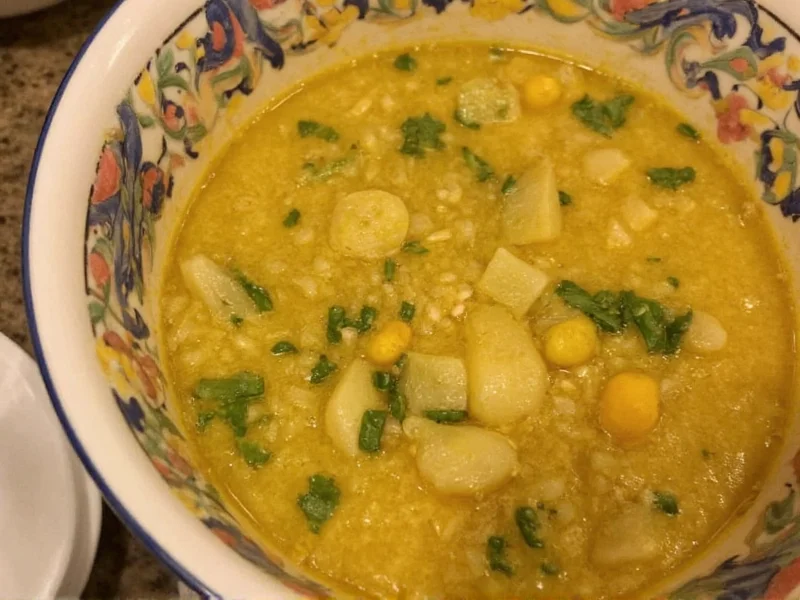Understanding Egusi Soup: West Africa's Culinary Treasure
Egusi soup represents one of Nigeria's most beloved culinary traditions, with variations spanning across West Africa. This rich, flavorful dish centers around egusi—the dried, ground seeds of melon varieties like Citrullus lanatus. When properly prepared, egusi transforms from a simple seed into a thick, nourishing broth that serves as both comfort food and cultural touchstone.
The Essential Components of Authentic Egusi Soup
Creating genuine egusi soup requires understanding its foundational elements. Each ingredient plays a specific role in developing the soup's distinctive texture and complex flavor profile that has sustained West African communities for generations.
Egusi Seeds: The Heart of the Dish
Egusi seeds, technically melon seeds from specific West African cultivars, provide the soup's namesake and thickening agent. These ivory-colored seeds contain natural oils and proteins that, when ground and cooked, create egusi soup's signature creamy consistency without dairy. Properly toasted egusi develops a subtle nuttiness that permeates the entire dish.
Leafy Greens: Nutritional Powerhouses
Traditional egusi soup incorporates nutrient-dense leafy vegetables that vary by region and season:
| Vegetable Type | Regional Preference | Flavor Contribution |
|---|---|---|
| Ugwu (Pumpkin leaves) | Most common in Southeastern Nigeria | Mild, slightly sweet flavor |
| Efo (Spinach) | Widely available alternative | Earthy, robust taste |
| Oha (African breadfruit leaves) | Eastern Nigeria specialty | Distinctive aroma, slightly bitter |
| Bitterleaf | Traditional preparation | Complex bitter notes requiring careful preparation |
Protein Elements: Building Depth of Flavor
The protein components in egusi soup serve dual purposes—providing nutrition and developing the soup's foundational flavors. Traditional preparations typically include:
- Assorted meats (beef, goat, tripe) cooked until tender
- Smoked or dried fish for umami depth
- Dried shrimp or crayfish—essential for authentic flavor
- Stock cubes (like Maggi or Knorr) used sparingly for enhancement
Regional Variations Across West Africa
While Nigerian egusi soup remains the most recognized version, neighboring countries have adapted the dish to local tastes and available ingredients:
- Ghanaian version often incorporates groundnuts for additional thickness
- Benin preparation might include smoked turkey for distinctive flavor
- Cameroonian adaptation sometimes features bitterleaf as the primary green
- Nigerian regional differences exist between Yoruba, Igbo, and Hausa preparations
The Cooking Process: Transforming Ingredients
Authentic egusi soup preparation follows specific techniques that maximize flavor development:
- Proteins are first cooked with onions and seasonings to create a flavorful base
- Palm oil is heated until the red color deepens and raw flavor dissipates
- Ground egusi is gradually incorporated into the oil to prevent clumping
- Broth from cooked proteins is added slowly while stirring continuously
- Leafy vegetables are added near the end to preserve texture and nutrients
Nutritional Profile of Traditional Egusi Soup
Egusi soup offers substantial nutritional benefits when prepared traditionally:
- Protein-rich from multiple sources (meat, fish, egusi seeds)
- Healthy fats from palm oil and egusi's natural oils
- Vitamins and minerals from leafy greens (vitamin A, iron, calcium)
- Fiber content from vegetables and egusi seeds
- Antioxidants from various spices and vegetables
Serving Traditions and Cultural Significance
In West African households, egusi soup serves as more than just sustenance—it represents community and heritage. Families traditionally serve egusi soup hot with:
- Fufu (pounded yam, cassava, or plantain)
- Eba (garri/cassava flakes)
- Amala (yam flour)
- pounded cocoyam (ede)
The communal nature of sharing egusi soup from a single bowl reflects West African values of togetherness and hospitality. Special occasions often feature particularly elaborate versions with premium ingredients.
Modern Adaptations While Preserving Authenticity
Contemporary cooks have developed approaches to maintain egusi soup's essence while accommodating different lifestyles:
- Vegetarian versions substitute meat broth with mushroom or vegetable stock
- Reduced palm oil preparations maintain flavor while decreasing saturated fats
- Pre-ground egusi offers convenience without sacrificing authenticity
- Freezer-friendly batches allow for traditional preparation with modern time constraints











 浙公网安备
33010002000092号
浙公网安备
33010002000092号 浙B2-20120091-4
浙B2-20120091-4